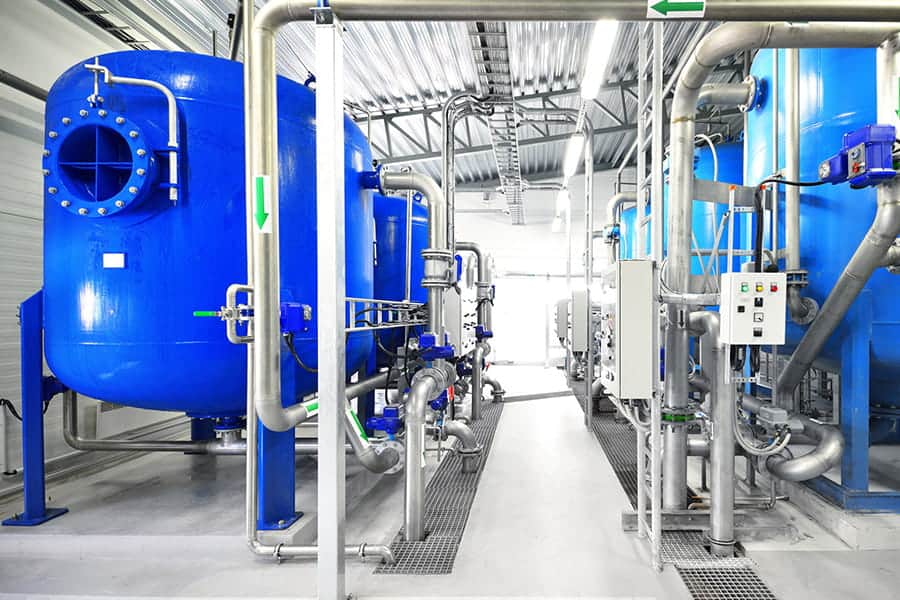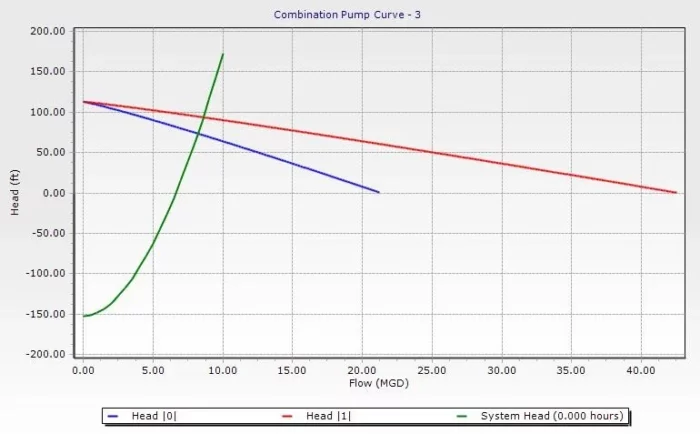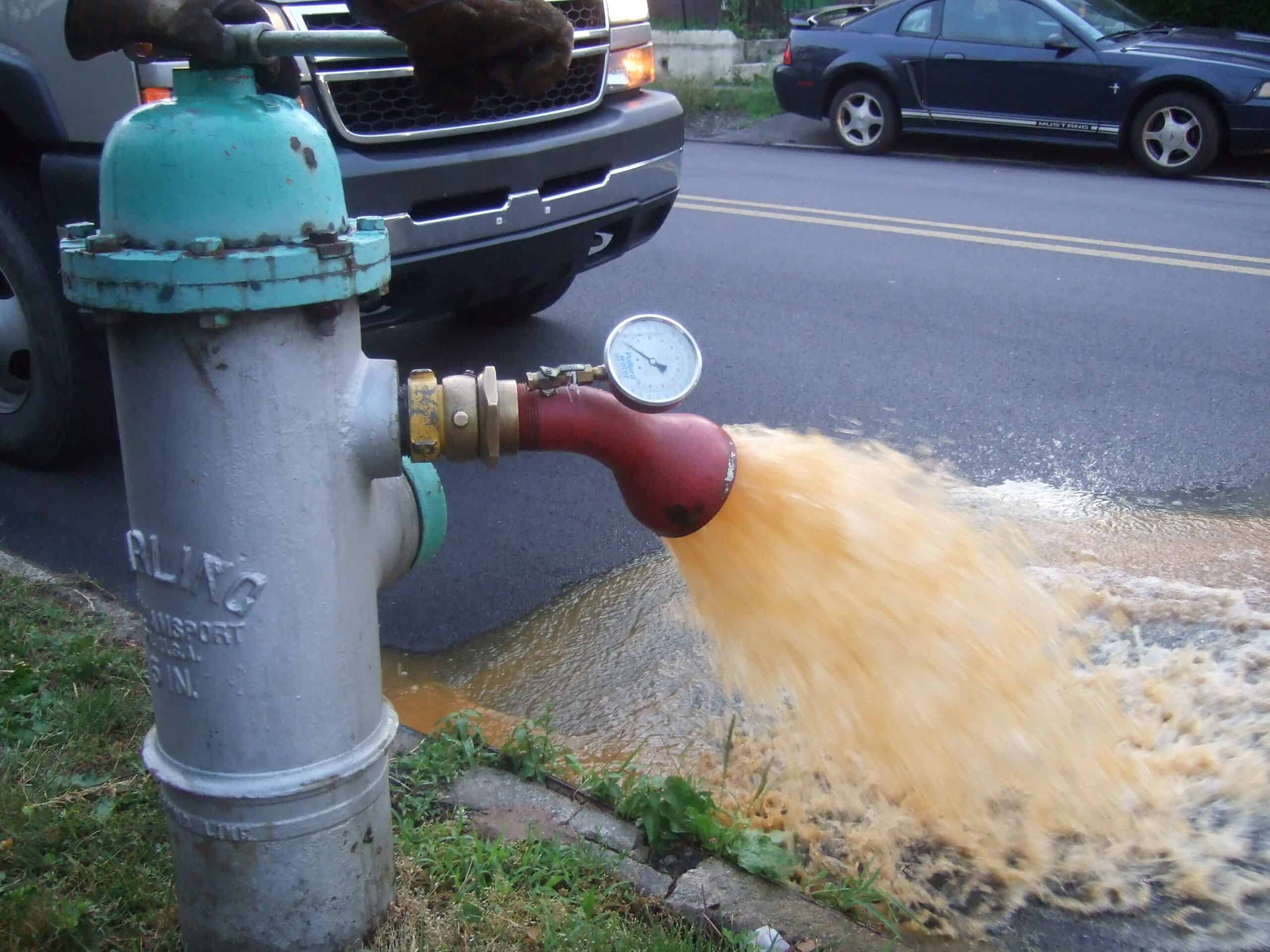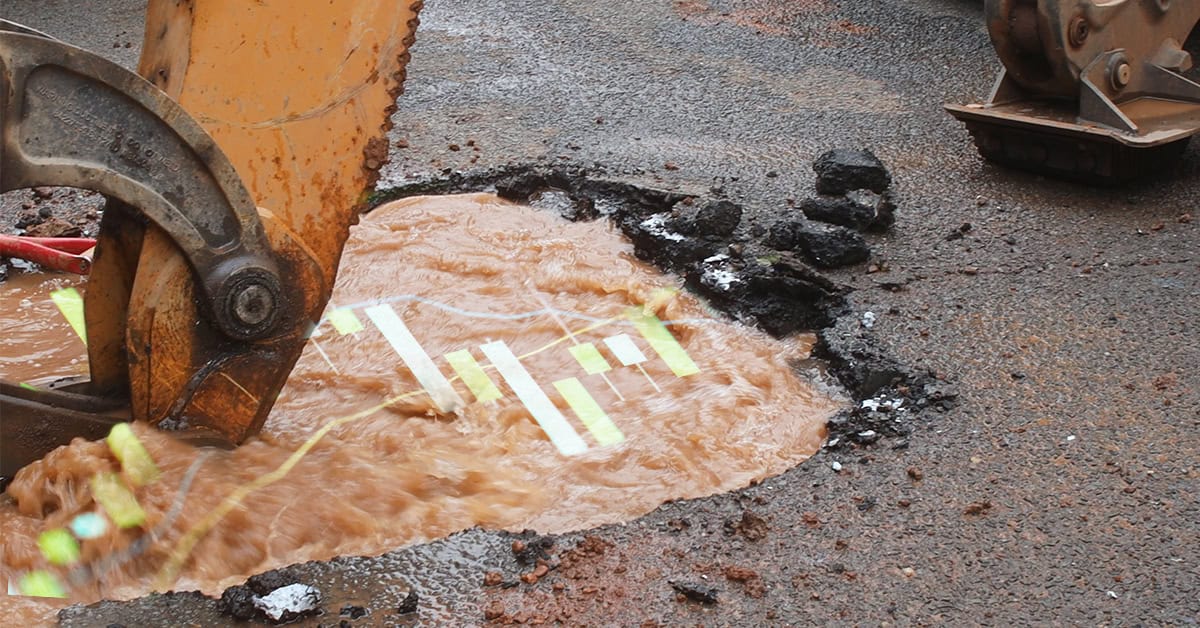Everyone knows that pumps are used to lift the water up and over hills. So, nobody would want to pump water downhill. Right?
Wrong. At least in some cases. This is especially common in long pipes in flat areas where using gravity flow would move the flow, but at a very low velocity, in very big pipes. This generally occurs in long sewage force mains (rising mains that aren’t rising). I’ve run into such pipelines a few times over the years.
To maintain adequate self-cleaning velocity, you need smaller pipes, which means you need to pump. By varying the diameter in model runs, you can look at the effect of trading off velocity vs. head loss.
Once you gather the data about the pipeline, the next step is to generate the system head curve. OpenFlows WaterGEMS and OpenFlows WaterCAD have powerful tools that can make this complex task easy. The procedure is the same as for any other pump, but the curve looks a little different. Instead of the system head curve intersecting the vertical axis at a height corresponding to the lift, the intersection point is at a negative value, as shown below.
How do you interpret such a curve? The green system head curve intersects the head = 0 line at about 7 MGD, which means that for flows less than 7 MGD, there is no need to pump. Gravity will move the flow. If the desired flow exceeds 7 MGD, the pump must be turned on. The flow with one pump on (blue line) would be 8 MGD. If more flow was needed, a second pump could be turned on (red line), but the flow would only increase to about 8.6 MGD. Each pump would discharge 4.3 MGD as they fight for the capacity of the force main.
The reason for this was that at 8 MGD the velocity was already high, and friction losses were very large as demonstrated by the steep system head curve. Running two pumps would be a waste of energy.
In this particular system, the dry weather flow was less than 8 MGD, so the system ran by gravity most of the time. It only reached 8 MGD during wet weather events. The pipeline was 22,000 ft through congested areas, so paralleling or replacing the pipeline was prohibitively expensive. The solution, at least for now, was to install some very large equalization tanks to handle flows greater than 8 MGD until the tanks can be pumped down once the inflow decreases.
The example above was for a case with a large change in elevation along the pipeline, such that by the time the pump needed to be turned on, the velocity was already high, and friction losses were large. This will not always be the case. Downhill pumping can work efficiently over a wide range of flows, and works best the elevation drop is not too large.
Intermediate high points along a force main create a special problem and were dealt with in an earlier blog.
Want to learn more from our resident water and wastewater expert? Join the Dr. Tom Walski Newsletter today!










